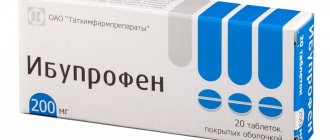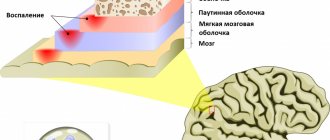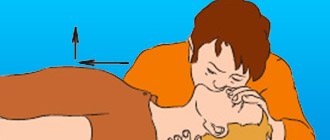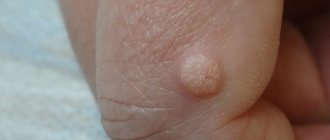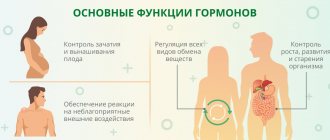Poliomyelitis is a highly contagious viral disease that causes paralysis of the arms, legs, and breathing, and can also cause death. Poliomyelitis pathogens penetrate the oral mucosa mainly through contaminated water. Infection by airborne droplets is also possible.
Poor hygiene conditions favor transmission. The incubation period ranges from 3 to 35 days. After a person gets sick, he develops lifelong immunity (protection against infection) to one viral type (but there are polioviruses types 1, 2 and 3). Only vaccination completely protects against infections of all three types. You can get vaccinated against polio at the RebenOK clinic at the best prices in Moscow.
Why is polio dangerous?
Most infections (>95%) are asymptomatic, but antibodies are produced. If there are signs of illness, there are different pictures of the disease:
· Abortive polio: inflammation of the gastrointestinal tract (gastroenteritis), fever, nausea, sore throat, muscle pain and headaches without central nervous system involvement.
· Non-paralytic poliomyelitis (aseptic meningitis): inflammation of the meninges without paralysis.
· Paralytic polio (1 in 200 infections) with typical symptoms of paralysis: independent breathing may become impossible and lifelong use of mechanical ventilation may be required. Paralysis can also lead to death.
Even decades after infection, post-poliotic syndrome may occur. There is no cure for polio. Only symptomatic therapy is prescribed to eliminate discomfort.
Principles and purposes of vaccination
Polio is a serious disease that affects the nervous system and can lead to paralysis in a matter of hours. Poliomyelitis is incurable, it can only be prevented. When given repeatedly, the polio vaccine can protect a child for life.
Vaccination against polio is carried out everywhere. According to the National Vaccination Calendar of the Russian Federation, the first two vaccinations are carried out with IPV, the third and subsequent revaccinations are carried out with OPV. In addition to vaccination and revaccination of children, revaccination of adults is carried out if they travel to areas dangerous for polio.
Currently, under the auspices of WHO, a program to eradicate polio from the Earth is being implemented. Russia is certified as a country free from wild poliovirus. But as long as there is at least one infected child in the world, children in all countries are at risk of contracting polio.
Failure to eradicate polio from these remaining persistent foci could result in up to 200,000 new cases of the disease occurring annually worldwide within 10 years.
Types of vaccines
Various vaccines are available, which are administered by a doctor using a syringe in several single doses. Polio vaccination for infants is often combined with other vaccines. The combination vaccine is distributed over four single doses: the first is given to infants at the age of 3 months, the last - in the second year of life.
Types of polio vaccines:
· Vaccination with OPV (oral polio vaccine).
It comes in the form of drops and contains weakened forms of two types of viruses. Passive immunity is produced in the intestines.
· Vaccination IPV (inactivated vaccine).
It has the form of a homogeneous suspension, available in disposable 0.5 ml syringes. It contains three types of “dead” viruses.
OPV is cheaper. The drug is produced in Russia and has good reviews. Inactivated polio vaccine is an imported product. The drugs have certain differences and have their own side effects and positive aspects.
The RebenOK clinic uses several drugs. Names of the polio vaccine:
· "Pentaxim". Designed for children from three months of age. The national vaccination schedule involves three injections with an interval of one and a half months and further revaccination after a year. The second revaccination (fifth administration of the drug) is carried out with OPV or IPV.
· "Bivouac Polio". Live polio vaccine, which consists of three doses of a weakened oral vaccine and two doses of an inactivated vaccine. It is carried out in the first year of life. Booster vaccination against polio is carried out one year after receiving the first dose.
· "Infarix Hexa". A combined drug that does not have strict preparation requirements. The vaccine is effective against polio, tetanus, diphtheria, whooping cough, Haemophilus influenzae, and hepatitis B.
· "Polimilex". A single drug that is widely used for the prevention of polio. Injected subcutaneously or intramuscularly. The drug is “dead”, so it cannot cause the development of the disease.
The choice of drug remains with the doctor. Many experts prefer to use combination vaccines. If a child has contraindications, then single medications are prescribed.
What to do if you miss the recommended deadlines
If you fail to get vaccinated on time, you need to contact your pediatrician. He will prescribe an individual scheme. It is important at what stage the deviation from the recommended deadlines occurred. If one of the first vaccinations is missed, continue vaccination according to the calendar. In some cases, revaccination is carried out earlier, based on how much time has passed between the first vaccinations.
It is important that by the age of 7 the child has received 5 vaccinations against polio.
If it is not possible to find out what vaccinations the baby received previously, do this:
- up to one year - vaccination is carried out according to the polio vaccination schedule for children;
- from one year to 6 years - the vaccine is administered twice, with an interval of 30 days;
- from 7 to 17 years old - one vaccination is given.
Advantages and disadvantages
Polio vaccination is usually given in infancy as part of basic immunization, along with the other five routine vaccinations. Poliomyelitis is a serious infectious disease, which in its development stage leads to disability if the gray matter of the spinal cord is damaged. Benefits of polio vaccination:
· allows you to avoid infection and prevent disability, skeletal deformities and paralysis;
· the vaccinated person develops immunity from the disease, so even if infected, the child will tolerate the disease much easier;
· Adverse reactions after vaccination are mostly absent.
Many believe that the vaccine has shortcomings that result in the development of the disease polio. But the probability of such an outcome is no more than 1 case in 2.7 million people.
Vaccination is not dangerous to the life and health of the child. The goal is to protect against future infection by creating a barrier against infection. The most harmless is the inactive vaccine.
FAQ
Parents tend to be interested in details regarding immunization. They ask how many polio shots are given , whether children are contagious, when is the best time to get vaccinated, how best to prepare, and what to consider. Doctors give comprehensive answers to the most common questions.
Is the polio vaccine safe for children?
Vaccination with a drug based on inactivated viruses is absolutely safe. Non-living pathogens are not able to provoke the development of the disease. There is a risk of contracting polio after vaccination if the vaccination is carried out with an oral preparation. In practice, the frequency of such cases is 1 in a million. Children with immunodeficiency and gastrointestinal diseases are at risk. Patients who have suffered a vaccine-associated form of pathology can only be vaccinated with IPV.
Due to their heavy workload, doctors do not always have the opportunity to instruct parents on how to properly prepare for immunization and what to do after vaccinations against polio and DPT. Here's what you need to know:
- the day before vaccination, blood and urine tests are taken. The referral is issued by the pediatrician.
- Shortly before the procedure, you need to feed the child his usual food that does not cause allergies. It is worth avoiding any foods that can cause digestive upset. It is recommended to stick to a gentle menu for several days after immunization.
- If you have a fever after getting a polio vaccine, this may indicate an infectious disease. Some parents mistakenly take a high temperature for a complication after vaccination and do not consult a doctor, making do with antipyretic drugs. This behavior is unacceptable.
When is the best time to reschedule the vaccine?
If the baby has recently been ill and is still weak, vaccination is postponed to a time when he feels good. If a child visits a child care facility and quarantine is declared there, the doctor must make sure that he is healthy. Vaccination is also postponed if complications have previously appeared after vaccination with DTP or other vaccines. In this case, the pediatrician monitors the baby’s condition.
Are children contagious after polio vaccination?
There is a chance of contracting polio after vaccination if a live vaccine is used. The following categories are at risk:
- children suffering from congenital pathologies of the digestive system;
- patients with impaired immunological reactivity;
- pregnant women (both mother and child are at risk of infection).
The incidence of the disease is 1 case in 500 thousand - 2 million doses. In many countries this has led to the abandonment of OPV use. In Russia, this type of vaccine is still used.
Parents are wondering whether it is possible to have contact with unvaccinated children. Theoretically, a baby vaccinated with a live vaccine is dangerous for some people. It is worth limiting contacts with the following categories of the population:
- undergoing chemotherapy;
- HIV-infected;
- unvaccinated children with congenital immunodeficiency;
- persons taking drugs to suppress the immune system.
In practice, it is difficult to follow this recommendation, so for the first few days after vaccination it is better not to visit crowded places so as not to expose them to the risk of infection.
How to prepare a child
The pediatrician will tell you what tests your child needs to do. Only healthy babies can be vaccinated. There should be no cough, runny nose, fever, indigestion or allergic symptoms. Breakfast should be light, drinking should not be too much. When going to the clinic, you need to dress your child so that he does not get cold or sweat.
Is it possible to get vaccinated if you have a runny nose?
On the day you are vaccinated against polio, you should not have a runny nose. If parents suspect that the baby is sick, but are not sure, they should consult a pediatrician. Perhaps the baby develops ARVI or the flu, then the vaccination will have to be rescheduled.
Should you bathe your baby?
You can bathe your child after vaccination, being careful, including not allowing him to freeze. However, on the day of vaccination it is better to do without swimming. The next day, short-term water procedures are allowed without using a washcloth. In the following days, the baby is washed as usual. It is recommended to check with your pediatrician about whether it is possible to bathe your child after polio vaccination if the baby has chronic diseases. In this case, it is better to play it safe.
Adverse reactions
The combination polio vaccine, often used in infants, is generally well tolerated. There may be redness or painful swelling at the injection site. Allergic reactions are also possible.
As the immune system reacts to the vaccine, it may temporarily cause various illnesses. These include, for example:
· headaches and aches;
· gastrointestinal discomfort;
· fever and fatigue;
· irritability and chills.
These vaccination reactions usually resolve on their own within 1-3 days.
Contraindications
The inactivated polio vaccine is not administered to patients:
- those suffering from infectious diseases;
- having individual intolerance to the components that make up the drug;
- infected with the human immunodeficiency virus;
- those suffering from chronic diseases that are in the acute stage;
- prone to allergic reactions;
- having malignant neoplasms in the body.
Important: For nursing and pregnant women, vaccination is recommended only in cases of urgent need.
Is there a fever after vaccination?
Children may develop a fever after receiving the polio vaccine. This reaction is considered normal and indicates that the body has begun to produce antibodies necessary to fight the virus. A slight increase in body temperature is observed in 1-4% of patients. The temperature may rise to 37.5-38.6 degrees. If the readings exceed a moderate level, then you should take an antipyretic drug.
Fighting polio
Outbreaks of polio periodically occur in different parts of the world. An active fight against the disease took place in the middle of the last century in Europe and North America, and then an effective vaccine against the virus was created. In the USSR, children were actively vaccinated against polio, so by 1961 the disease was defeated
.
For almost half a century, doctors in the Soviet Union and then in Russia did not encounter new cases of the disease, but in 2010, an outbreak of polio was recorded in Tajikistan
.
Then about 700 people became infected with the virus, and 26 of them died. Quite quickly, the virus penetrated into Russia, and it turned out to be a “ wild strain
” of the virus, which had previously been found only in India, Pakistan and Afghanistan. It was decided to reconsider the approach to vaccination.
How many vaccinations are given against polio?
The Russian national vaccination calendar provides the following polio vaccination schedule:
· in the 1st year of life – at 3,4,5 and 6 months;
· in the 2nd year of life – at 18 and 20 months;
· at the age of 14 – once.
In accordance with the Russian calendar, the first two vaccinations are carried out with IPV, the third – with OPV. The vaccination course involves the use of only inactivated vaccines. When two doses of OPV are administered, it is possible to provide high local protection in the intestine. With continued use of live vaccines, the risk of developing vaccine-associated poliomyelitis is reduced.
Are there any restrictions
In some cases, vaccination cannot be done. Contraindications to immunization against polio:
- pregnancy;
- immunodeficiencies of various origins;
- allergy to the components of the drug (neomycin, streptomycin);
- severe reaction to a previous vaccination;
- colds, acute respiratory infections;
- exacerbation of chronic diseases.
In the last two cases, vaccination should be postponed until complete recovery. In a state of reduced immunity, vaccination can cause negative consequences.
Children with immunodeficiency cannot receive a vaccine based on live strains of the virus (OPV). In this case, the possibility of vaccinating them with an inactivated vaccine (IPV) is being discussed.
Tips for parents
If a child often has allergic reactions or is allergic, then vaccination is possible only during the period of remission. There is no need to use any medications before administering the vaccine.
If your child experiences the following symptoms after vaccination, you should consult a doctor:
· appearance of signs of acute respiratory infections (runny nose, cough, etc.);
· dysfunction of the gastrointestinal tract;
· shortness of breath, decreased muscle tone of the limbs.
We are talking about signs of vaccine-associated polio, which may appear 4-30 days after OPV administration. A visit to the pediatrician is necessary if there is an irregular heartbeat, urticaria or severe headaches.
After vaccination, it is recommended to avoid visiting crowded places. The child should be given more purified water to drink, and allergenic foods should be excluded from the diet.
How to behave after, what to pay attention to
It is recommended to avoid visiting public places for 1-2 days. Whether a child is contagious after receiving a polio vaccine depends on the type of vaccine. You should ask your doctor about this. You also need to monitor the injection site - it may become red or inflamed. You can eat and drink 1-2 hours after the procedure. If suspicious symptoms occur, you should consult your doctor. After vaccination, the pediatrician will instruct you on what to do if your baby feels unwell.
Warning for the unvaccinated
The stated goal of the World Health Organization (WHO) is to eradicate polio, and Russia is also committed to this goal. However, polio is still found in Pakistan, Afghanistan or Nigeria and can also be carried by tourists into the Russian Federation. Therefore, polio vaccination is still recommended, important and necessary.
Everyone should be vaccinated against polio, ideally as early as infancy. People who were not vaccinated as children, or whose vaccination status is unknown, should catch up on polio vaccination.
How to prepare for DTP administration?
In order to minimize side effects, it is necessary to adhere to certain rules. In particular, a young patient should not have contact with potential carriers of the virus, both before and after vaccination. Before getting vaccinated, the optimal solution would be for one parent to stay in the hospital to “hold the line,” and the other to go for a walk with the child. Afterwards, you should avoid crowded places for several days.
Before being vaccinated against whooping cough, diphtheria and tetanus, and polio, the child needs to be examined by a pediatrician. Only a specialist will be able to give an independent assessment of the young patient’s condition and, having excluded all possible contraindications, give him permission to administer the immunobiological drug. Important: before vaccination, the child must be healthy. The slightest manifestations of colds and other diseases are grounds for issuing a temporary medical exemption from vaccination.
Contraindications for vaccination
Permission to vaccinate a child/adult with DTP is issued in each case individually.
A patient may be temporarily prevented from undergoing immunoprophylaxis if he/she has:
- exacerbation of a chronic disease;
- acute stage of an infectious disease;
- weakened immunity after surgery, etc.
However, some restrictions fall into the category of false contraindications. Those. The vaccine can be given, but only after the patient’s condition has normalized. These are prematurity, diathesis, seasonal allergic diseases, severe adverse reactions to DTP and convulsions in relatives. There is also a list of absolute contraindications to vaccination against whooping cough, diphtheria, tetanus, and polio.
It includes:
- sensitivity to vaccine components;
- primary and secondary immunodeficiency conditions;
- progressive diseases of the nervous system;
- severe adverse reactions to the previous administration of the drug.
Such patients are vaccinated with ADS, a vaccine that does not contain a pertussis component. At the same time, it is mandatory for them to consult a specialist, take tests, and undergo additional medical examination.
Vaccine injection site
The associated vaccine (includes pathogens: whooping cough, diphtheria, tetanus, polio) is administered intramuscularly.
For children 0–3 years old, the injection site is the anterolateral thigh. For adult patients – deltoid muscle. Injection of the drug into the gluteal region is prohibited. Reason: low effectiveness of vaccination, high risk of damage to blood vessels and the sciatic nerve. In cases where polio prevention involves the administration of a separate vaccine, the method of performing this medical procedure is determined by the stage of vaccination and the manufacturer's recommendations. So, in particular, the IPV vaccine (inactivated polio vaccine) is given in the shoulder, subscapular region or thigh. Live OPV vaccine is administered orally. In the latter case, it ends up on the lymphoid tissue of the pharynx or palatine tonsils. The child is asked to throw back his head and open his mouth, where 2 or 4 drops are dripped (determined by the dosage of the drug).
What to do after vaccination?
You must remain on the premises of the medical facility for half an hour after vaccination.
Reason: if an acute reaction to the drug occurs, doctors will be able to quickly come to the rescue. The risk of complications will be reduced to almost zero. At the same time, it is not necessary to sit next to the vaccination room. You can go outside and take a walk near the clinic (and within reach of the medical staff, and good for your health). When you get home, the child should be given an antipyretic. Afterwards, throughout the rest of the day you need to monitor changes in his body temperature. Experts believe that hyperthermia is not one of those reactions that contribute to the development of a persistent immune response. If the child does not complain about his health, you can go for a walk with him. At the same time, it is extremely undesirable to visit people, play on playgrounds, or visit crowded places.
You can take a shower with water at room temperature. It is not advisable to take a steam bath or wash in a hot bath for 2–3 days after vaccination. The vaccinated body is weakened and vulnerable to diseases. The best solution during this period of time is to completely avoid overheating and cooling. It will be optimal if the air temperature in the room does not exceed 22°C and the humidity is 70%.
Overfeeding a child is not recommended. This will negatively affect his condition. Drinks can be given without restriction. In this case, as a liquid to quench your thirst, you should not use juices, but warm water, weak tea, or chamomile infusion. As for nutrition, it is recommended to temporarily remove allergenic foods from it (chocolate, red berries, mushrooms, hard cheese, etc.). Also, new foods should not be introduced into the diet to avoid the occurrence of a specific immune response.
The body's reactions to DTP
After administration of an immunobiological drug, the patient may experience minor changes at the injection site. Belonging to the category of local reactions, they are expressed in:
- redness;
- the appearance of compaction;
- swelling
The child may complain of leg pain and have a slight limp. As a rule, such unpleasant symptoms disappear within a week. If they do not disappear, consultation with a specialist is required. For reference: most often hypermia and pastosity (edema) are caused by vaccines that contain adjuvants to enhance the immune response. Along with local ones, the child may exhibit general reactions to the vaccine.
These include:
- increase in body temperature;
- stool disorder;
- increased nervous excitability;
- appetite disorders.
The child may complain of headache, weakness, and insomnia. All this is normal. However, one should be able to separate natural reactions to DTP from pathological conditions. The latter are prolonged crying, fever, difficulty breathing, convulsions, and temporary immobility. To facilitate the child’s rehabilitation period after vaccination, it is recommended to strictly follow the doctor’s recommendations. In particular, give him an antipyretic to prevent an increase in body temperature. Remember: malaise (in its moderate manifestations) is a normal reaction. It speaks of the launch of processes in the body for the development of specific immunity.
Possible complications
Severe reactions to DTP can occur if the young patient has not been examined correctly.
There were contraindications, but despite this the vaccination was done. These consequences of vaccination include:
- disturbances in the functioning of the central nervous system;
- severe allergic reactions;
- residual convulsive states.
Immunization with OPV can cause the development of vaccine-associated poliomyelitis. Statistics show that the latter occurs in 1 case per 1,000,000 and most often has an abortive form (without paralysis). Severe disease is extremely rare. Having a paralytic form, it is expressed in damage to different parts of the nervous system: spinal, pontine or bulbar.
There were no effective treatments
How did they try to treat polio? At the end of the 19th and beginning of the 20th centuries, when the disease acquired the character of epidemics, the sick ended up in hospitals for a long time: for months and even years. Unfortunately, the consequences of paralysis in most cases remained for life and could not be treated.
If the virus affected the muscles of the diaphragm, patients were placed in so-called “iron lungs” - boxes in which pressure changes helped the lungs work.
The worst thing is that this treatment did not help. Children and adults infected with the virus lived and died while shackled in a metal structure. After spending a year in such a chamber, the patients' respiratory muscles atrophied; they could not even be connected to modern artificial stimulation devices. By the way, there are still people who use “iron lungs”; unfortunately, it is not possible for them to return to normal life.
How the polio virus was discovered
The very first attempts to study polio were made by an orthopedic doctor from the Netherlands, Jacob Heine. In 1840, he systematized data about the disease and described its characteristic features. Heine suggested that the underlying pathology was infection.
In 1907, a scientist from Sweden, Wikman, classified the clinical signs of the disease, and in 1908, polio was reproduced in experiments with monkeys - Popper and Landsteiner injected the animals with a drug obtained from the spinal cord of a sick child. All tests for bacteria were negative, so the researchers assumed a viral origin of the disease.
ON A NOTE! The virus is highly resistant to external factors. It tolerates drying and freezing well; it is not affected by digestive tract enzymes, chemicals, or antibiotics. It remains viable for three months in an aquatic environment and for six months in feces. But it does not tolerate UV rays, disinfectants and high temperatures.
The main “objects” of the polio virus are children under five years of age. An unvaccinated adult can also get sick, but in this case the pathology will be especially severe. Infection is possible by drinking water or food, or through surrounding objects. Most often, the virus is activated in the summer and autumn.
Oddly enough, the disease began to take on an epidemic character as the level of hygiene and comfort of the population increased. Scientists have found that it is better for a person to come into contact with the pathogen in infancy - the supply of maternal antibodies is sufficient for immunity to be formed when encountering the virus. With an increased desire for cleanliness and sterility, such a meeting does not occur. As a result, in the future, as maternal protection is spent, the likelihood of infection increases sharply.
In 1949-1951, a group of scientists discovered that the virus that causes polio could multiply in cultural media. This discovery made it possible not only to begin the active development of diagnostic and preventive methods, but also to begin the search for a vaccine. In 1954, Frederick Robbins, John Enders and Thomas Weller received the Nobel Prize for it.
